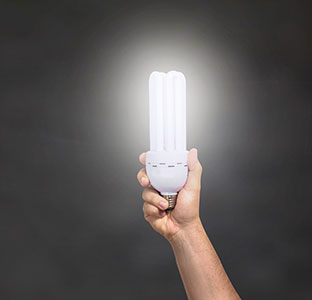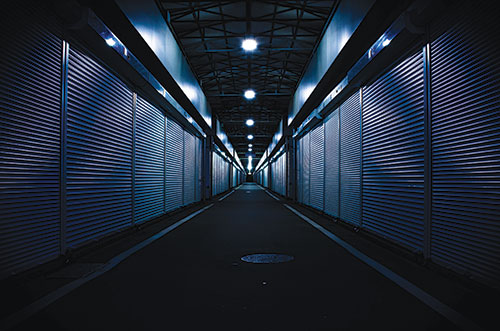

We have seen some impressive advances in surveillance technology over the past few years with cameras being able to do amazing things and perform accurate analytics. Unfortunately, for surveillance jobs after hours, darkness has always been a problem.
To obtain value from your surveillance systems after hours, one had to have additional lighting installed (or on camera), use infrared (IR) lights or even thermal cameras. But if one believes the information coming from the vendors, this has and is changing rapidly. The advances in low-light camera technology are impressive and if you have the right technology, colour images can be captured in almost total darkness.
Hi-Tech Security Solutions decided to find out what is happening in the low-light surveillance market by asking a few vendors for their input on their latest technologies. The vendors we approached include:
• Moshe Blieden from Axis Communications.
• Quintin van den Berg from Bosch Building Technologies.
• Jet Zhu from Dahua Technologies.
• Alex Penhaligon from Hikvision.
Hi-Tech Security Solutions: What technology does your company use to provide low-light solutions?
Blieden: Lightfinder technology is built to be very sensitive to the few visible light photons in low-light areas thanks to a combination of extremely sharp sensors and carefully tuned image processing. Cameras with this technology can capture full-colour images in extremely low light, even down to 0.02 lux.

When you need to secure an area in total darkness, you may want to choose a technology that can expand the wavelength of photons it can capture, such as OptimizedIR, where IR stands for infrared.
Cameras that use IR light for imaging have so-called ‘day-and-night functionality’, or are ‘day-and-night cameras’, which means that during the day they employ visible light to create pictures, but when light falls, the night mode is triggered which expands the camera sensitivity to the infrared spectrum.
To achieve this, cameras can employ either natural light, such as moonlight, or artificial light, from incandescent light bulbs or a dedicated IR light source, which can be built into the camera for extra discretion. The footage IR produces is not colourful, but in scales of grey.
Van Den Berg: Bosch introduced the world’s first starlight cameras in 2012. Designed to give excellent images, even in the lowest light conditions, this revolutionised the industry and created true 24/7 surveillance. Bosch starlight cameras are able to produce full colour images in the dark beyond the point where other cameras have switched to monochrome.
Now we have raised the bar even higher by further extending the technology in several form factors and camera families with improved light sensitivity, dynamic range of up to 120 dB, frame rates of up to 60 frames per second (fps) and video analytics at the edge as a standard.

Zhu: The ultra-starlight image sensor used by Dahua full-colour cameras feature large pixel size, back-illumination and higher conversion gain (HCG) under low illumination. They also use the F1.0 super-large aperture.
In order to suppress the noise introduced by the camera imaging process, the transmission channel and imaging circuit, Dahua’s Noise Reduction Algorithm 4.0 makes full use of the statistical information in the spatial and temporal domains to enhance dynamic scene performance.

Penhaligon: Colour-related information is crucial for many scenarios, especially when in low-light and night environments. Hikvision offers cameras that see clearly in colour with DarkFighterX and ColorVu technologies. DarkFighterX includes an innovative dual-sensor design. Based on the process human eyes use to perceive colour and brightness, it employs two sensors – one for IR imaging, guaranteeing brightness and sharpness, the other for visible light, guaranteeing vivid colour reproduction. These signals are then combined into one bright and full-colour image.
Hikvision ColorVu technology is ideal for monitoring at a closer range. With an F1.0 super aperture and an advanced sensor, ColorVu cameras pull in four times the light of a conventional camera, for daylight-like colour images in low-light conditions. In addition, ColorVu cameras are equipped with a soft and warm supplemental light to guarantee colourful images when in zero-light environment.

Hi-Tech Security Solutions: What resolution images can you offer and at what distance?
Blieden: From two to 20 megapixels; the distance is dependent on camera models and the selected lens.
Van Den Berg: Bosch has up to 12 MP (4K ultra HD) resolution cameras available as box, fixed dome cameras and the new MIC IP 7100i camera is the first camera of its kind to combine a rugged housing with 4K ultra HD resolution, with 12X zoom and optical image stabilisation.
These solutions cover large areas and identify objects at a great distance. Combined with high frame rates and excellent light sensitivity, they provide a level of detail that makes the difference when collecting scene evidence and metadata management. It is up to the lens you choose what distance you can cover. For example, with a 75 mm tele-lens one can detect a moving object at a distance of up to 1949 meters. Use the Bosch Video Analytics and Lens Calculator at www.boschsecurity.com to calculate how far a camera can see and at what distance it can detect objects with built-in video analytics.
Zhu: We can offer a resolution of up to 2688 × 1520; and the furthest distance currently is 120 m. We can also do facial detection at 40 m.
Penhaligon: Our DarkFighterX cameras can provide high-resolution and long-range video imaging capabilities, with a 35X optical zoom capability that allows a 1-metre object to be displayed at 250 pixels at a distance of 260 metres, which is clear enough to identify it easily.
For the ColorVu series, in the case that the light levels fall to zero, the cameras can still capture vivid colour images within a range of up to 40 metres with the built-in supplemental lighting.
Hi-Tech Security Solutions: Is there still a need for infrared in cameras? Where would they be useful?
Blieden: Yes, in total darkness scenarios and where colour information is not crucial, or for other applications, for example ANPR.
Van Den Berg: Yes, with starlight cameras you can expect to be impressed with the best, highly detailed colour images in extreme low-light situations. But when light levels drop to zero, infrared illumination can still ensure the greatest level of detail. In fact, all Bosch cameras with IR on-board or fitted as an accessory can capture high-quality images in complete darkness over a distance ranging from 60 to 400 metres, ensuring objects of interest always have optimum illumination. I believe we will see IR being around for many years to come, with increased IR ranges and smart IR optimisation features evolving even further.
Zhu: Yes. When the ambient illumination is below the threshold of the camera or the distance is further than the full colour range, the camera will switch to IR and black and white.
Penhaligon: Yes. As mentioned above, the DarkFighterX technology employs two sensors at the same time, one for IR imaging and the other for visible light. Infrared sensors in the camera capture reflected infrared light that is invisible to the human eye, but very ‘bright’ to the sensor. While these IR sensors only transmit in black and white, visible-light sensors in the camera are simultaneously detecting and decoding colours. Both sensors sit behind a single lens and the camera combines the two spectrums of light to create video and images with higher brightness, better colour fidelity, sharper edges and less noise and blur.

Hi-Tech Security Solutions:What role is AI playing in your night vision solutions?
Blieden: The AXIS Q1615 Mk III is a perfect platform for tailor-made third-party applications based on deep learning on the edge. It offers Axis Lightfinder 2.0 and Axis Forensic WDR for high-quality colour images even when they are recorded in near darkness. With the proprietary Axis ARTPEC chip and a new deep-learning processing unit (DLPU), this dual chipset allows analytics to run directly on the AXIS Q1615 Mk III (on the edge), resulting in a faster and more scalable system and facilitating complex and powerful analytics. Edge-based automatic incident detection, counting and anomaly detection are just a few of the many options.
Van Den Berg: All Bosch starlight cameras come with video analytics at the edge as standard, requiring no additional licence fees from the customer. It makes high quality images more relevant by adding sense and structure to your video data. Video analytics enables you to stream only what‘s relevant, retrieve evidence quickly and simply and trigger alarms when needed, even for purposes beyond security.
By utilising the technology at the edge (built into the camera) it is one of the building blocks to accuracy in the world of AI; it’s simple, the better your images are, the better your AI will behave and interpret the scene, reducing false alarms and inaccurate information sent to your dashboard visualiser. Night monitoring can present a second layer of challenges when the image produces a lot of ‘noise’ affecting your bandwidth usage and storage capacity, resulting in an increased total cost of ownership. Crisp images and good compression is critical.
Zhu: AI can improve efficiency by easily classifying people and vehicles at night, triggering alarms and push alarm notifications independently, while allowing users to quickly find video recordings of the event afterwards.
Penhaligon: Both low-light imaging and artificial intelligence are trends for security cameras and it is meaningful to combine them together to provide more efficient night vision solutions. Currently our ColorVu and DarkFighterX solutions can both be integrated with deep learning-based AI technology to provide smart event detection, automated perimeter intrusion alerts and more.
For example, false alarms bother many camera users, especially at night. Our ColorVu cameras can be integrated with Hikvision’s AcuSense technology to achieve intelligent false alarm reduction. Empowered by deep learning algorithms, this integrated solution can distinguish people and vehicles from other moving targets such as rain, leaves and animals in low-light environments. The number of false alarms is reduced and security staff can focus on actual incidents for increased efficiency.
Hi-Tech Security Solutions: What are the latest low-light/night vision offerings from your company?
Blieden: As camera technology evolves, so does Lightfinder. The concept of Lightfinder 2.0 was introduced in selected cameras in May 2019. It represents a step change in low-light imaging, with increased light sensitivity, colours that are even more life-like and customised tuning for advanced users.
Van Den Berg: The new MIC IP 7100i and the midrange FLEXIDOME IP starlight 5000i IR, alongside our portfolio of IP 4000i, 5000i and 6000i fixed cameras, provide a powerful low-light offering for diverse solution requirements.
Zhu: Dahua Technology also provides the WizSense/WizMind series of full colour + AI cameras.
Penhaligon: Since we introduced the first generation of ColorVu cameras to the market in 2018, they have been one of our best selling products. Now ColorVu 2.0 cameras are coming, which will enrich the full-colour series of cameras, such as with Vivid ColorVu and ColorVu Lite. We will also release full-colour products that support zoom and the pixels will also be enhanced from 2 MP to 4K.
| Tel: | +27 11 548 6780 |
| Email: | marcel.bruyns@axis.com |
| www: | www.axis.com |
| Articles: | More information and articles about Axis Communications SA |
| Tel: | +27 10 085 8300 |
| Email: | support.sa@hikvision.com |
| www: | www.hikvision.com/africa/ |
| Articles: | More information and articles about Hikvision South Africa |
| Tel: | +27 11 543 5800 |
| Email: | malckey@technews.co.za |
| www: | www.technews.co.za |
| Articles: | More information and articles about Technews Publishing |

© Technews Publishing (Pty) Ltd. | All Rights Reserved.